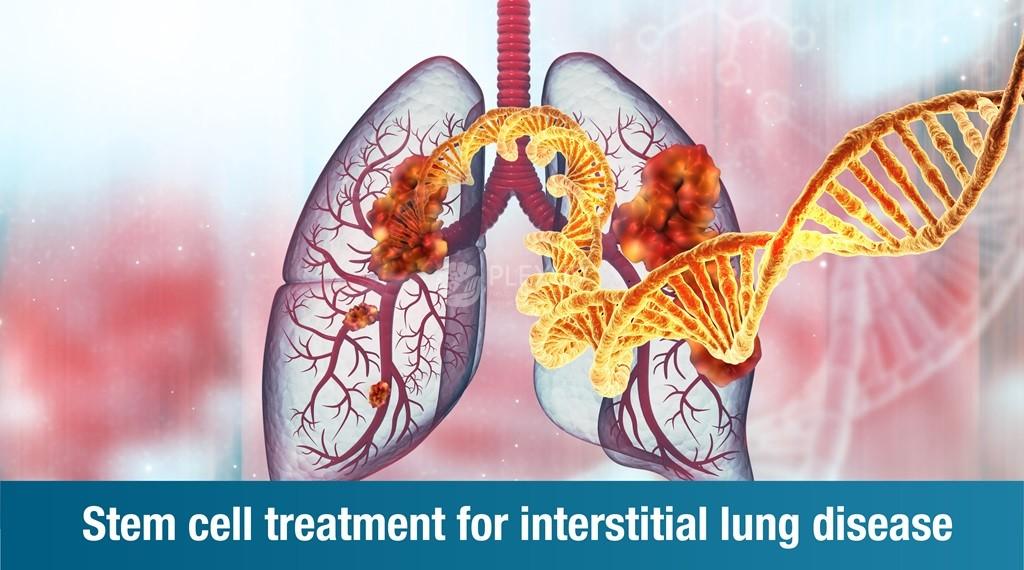
Our ability to breathe freely – in and out – is something we always take for granted. The instinctive rhythm we are all born with continues like a silent symphony taking us through the motions of life. Even when we describe something as breathtaking, we are still breathing in (and out)!
But for a person who struggles with this simple everyday ability because of the changes to the composition of the delicate lung tissue, every breath can be difficult.
Interstitial Lung Disease (ILD) refers to a diverse group of lung disorders characterized by inflammation and scarring of the lung tissue. While traditional treatments for ILD focus on symptom management and slowing disease progression, they do not do much in terms of improving quality of life. This is where Cell therapy offers a ray of hope to those affected. Let’s delve into the potential of the revolutionary Cell treatment for ILD, available at our center in Bangalore.
Understanding Interstitial Lung Disease
ILD is an umbrella term for various lung disorders characterized by inflammation and scarring of the interstitium, the tissue surrounding the air sacs (alveoli) in the lungs. This scarring (fibrosis) causes the thickening and stiffening of the lung tissue, thereby reducing its ability to expand and contract properly during breathing. ILD comprises a diverse range of conditions, including sarcoidosis, idiopathic pulmonary fibrosis (IPF), and connective tissue disease-associated ILD. These disorders have a common characteristic: progressive scarring of lung tissue which eventually leads to impaired lung function and respiratory symptoms.
Symptoms of Interstitial Lung Disease
- Dry cough
- Shortness of breath
- Fatigue
- Discomfort or tightness in the chest
- Muscle and joint pain
- Unexplained weight loss
- Cyanosis (blue colouration of lips and/or fingernails)
- Abnormal enlargement (clubbing) of fingers and toes (indicative of chronic oxygen deprivation)
Causes of Interstitial Lung Disease
- Autoimmune diseases
- Side-effects of certain medications
- Radiation
- Infections
- Hypersensitivity pneumonitis
- Family history
- Exposure to toxins
Cell Therapy for ILD
At Plexus we use mesenchymal Cells (MSCs) owing to their potential to modulate inflammation, promote tissue repair, and support the regeneration of damaged cells.
Alternatively, we also use umbilical cord-derived Cells to harness the regenerative capabilities of Cells, as well as to address the underlying damage in lung tissue.
Below are the essential characteristics of Cells that make them the ideal choice for treating ILD.
Anti-Inflammatory Effects
MSCs have potent anti-inflammatory properties. They modulate the immune response, and reduce inflammation in the lungs. This helps slow down disease progression to a great extent.
Fibrosis Modulation
ILD is typically characterized by the excessive deposition of collagen and other proteins, leading to fibrosis. MSCs modulate fibrotic processes, and help in slowing down or reversing the scarring of lung tissue.
Stimulation of Repair Mechanisms
MSCs secrete factors that help stimulate local repair mechanisms, including promotion of the growth of new blood vessels, and supporting the regeneration of damaged cells. This helps contribute overall lung function improvement.
Immunomodulation
A dysregulated immune system is a typical sign of ILD. The immunomodulatory properties of MSCs help restore a balanced immune response and prevent further damage to lung tissue.
Cell Therapy for ILD in Bangalore
Located in the heart of Bangalore, Plexus Neuro Center is a hub for medical innovation, especially Cell therapy. With clinical experience of over 35 years, Plexus is India’s first ISO-certified Cell research center. After receiving our Cell treatment for ILD, many patients have reported significant improvements in their quality of life. This includes:
- Reduced breathlessness
- Increased energy levels
- Improved overall well-being
We offer personalized treatment plans that are suited to your symptoms and goals. You can prevent further deterioration of your lung function by opting for Cell therapy for Interstitial Lung Disease today.
FAQs
Can Cells cure interstitial lung disease?
Cell therapy for ILD improves quality of life by reducing the severity of symptoms, slowing disease progression, reducing lung inflammation, and significantly improving lung function.
What is the new treatment for ILD?
Cell therapy is the latest and most advanced form of treatment for ILD.
What is the best treatment for interstitial lung disease?
The best treatment for interstitial lung disease (ILD) depends on the specific type and underlying cause. At Plexus, we recommend Cell therapy at the forefront of a multidisciplinary approach involving medications, pulmonary rehabilitation, and oxygen therapy.
What are the first signs of ILD?
Early signs of ILD include persistent dry cough, shortness of breath during exertion, fatigue, and unexplained weight loss. As the disease progresses, symptoms may worsen, leading to increased breathlessness and reduced exercise tolerance.
How do I know if my ILD is getting worse?
If you experience worsening shortness of breath, a decline in exercise tolerance, increased fatigue, or persistent cough, it may indicate progression of ILD. Timely detection and intervention are crucial for improved lung function and overall well-being.










